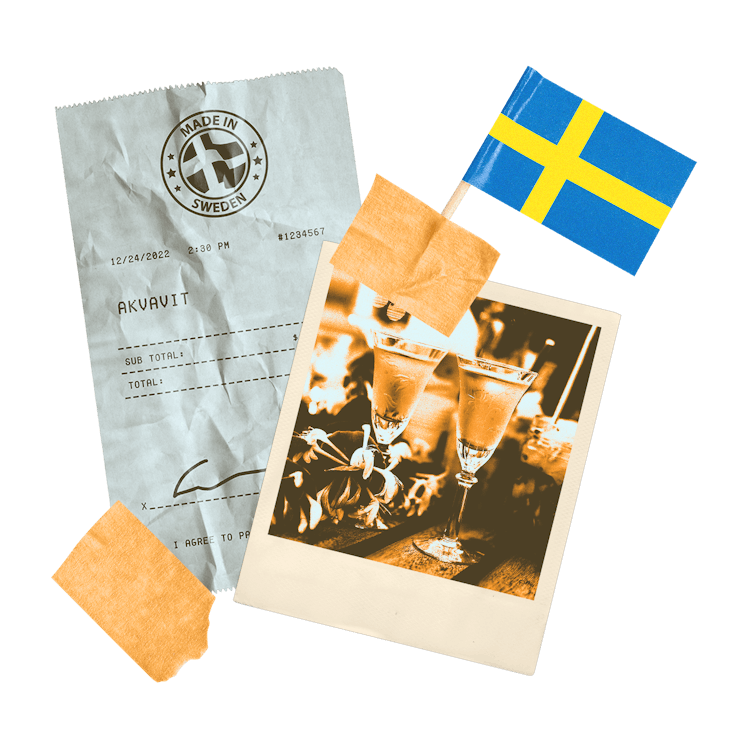Skål! Why It’s Time to Start Toasting Like a Swede
It turns out we're all doing toasts wrong.

Compared to most holiday traditions, mealtime toasts are usually treated like a booze-y afterthought. This is a missed opportunity. Toasts can begin stimulating conversations, encourage emotional intimacy among relatives, and are the single best way to let everyone know you’re enjoying your time together. How do you jump-start a great toasting tradition? Simply memorize this one word: “Skål!”
Yes, “Skål,” pronounced like “skoal,” is what people say when they toast in Sweden. But traditional Swedish toasts involve far more than just shouting out cheers and taking a drink. Swedish toasting traditions involve a complex yet entertaining series of gestures and mannerisms that are an integral part of formal meals. The result is a mealtime ritual that should be the envy of the world — at least the part of the world that celebrates bringing everyone together in good fun and cheer.
A common legend is that the concept of “skål” dates back to Viking times, when a victorious warrior would drink wine, mead, or beer from the skull of a fallen foe. “I am a little skeptical of that story, but it’s a pretty good tale,” says Gregg White, executive director of the Swedish Council of America and unofficial expert in all things related to skåling. A more likely explanation, says White, is that the tradition arose from everyone sharing a bowl of beer of spirits, since “skål” means bowl in Swedish.
Sweden’s formal skåling tradition took form in the mid- to late-1700s “as a way of appreciating each other and the wonderful food and drink in front of them at the dinner table,” says White. That ritual begins with everyone at the table having a small glass called a “nubbe” that is usually filled with ice-cold Akvavit, a powerful distilled spirit. At the start of the meal, the host raises his glass, holding it with his first three fingers and thumb and keeping his arm at a right angle. All the diners likewise raise their glasses and look around the table, making eye contact with everyone in attendance. Then, with a declaration of “skål!” from the host, everyone sips their drink, followed by another round of eye contact with everyone at the table. Finally, everyone sets down their glasses.
Throughout the meal, the process is initiated again and again — traditionally by the men in attendance, but really anyone can begin the cheer. The point is to connect with everyone at the table in a formal yet engaging way, to do away with the little dinner-table cliques that so often plague a big meal. “It breaks the ice and gets the conversation going,” says White. “With Swedes, you are talking about really uptight people, and sometimes an icebreaker like a little shot will help.” It helps that the first and last skål of the meal are often preceded by a short speech about being grateful for the good meal and company.
Of course, adds White, skåling also helps ward off Sweden’s notoriously frigid temperatures: “That first skål will warm you up after being out on a cold evening.”
So why not start toasting like the Swedes this holiday season? If nothing else, it should be fun teaching everyone the tradition, plus the kids will love the legend of the Viking skulls. “It’s a great way to say, ‘We are all together, we are sharing this wonderful meal and drink,’” says White. “It is a seal on the pact of friendship.”
Of course, since we’re talking about a family-friendly meal, maybe go easy on the Akvavit. Who’s up for some nubbes of La Croix? Skål!
This article was originally published on